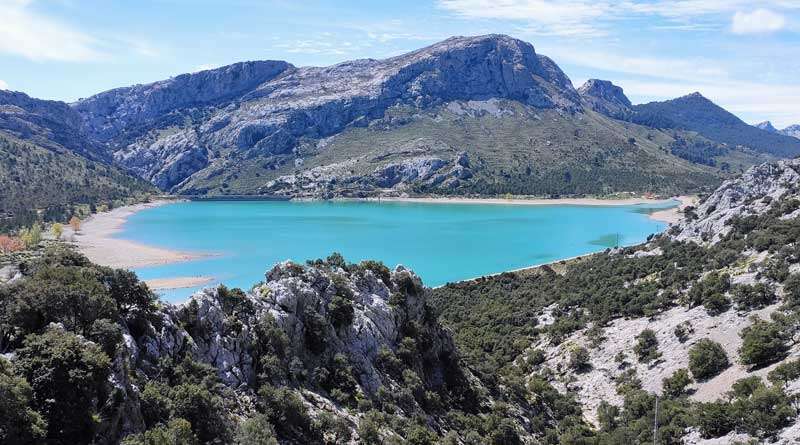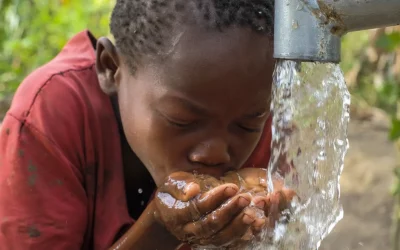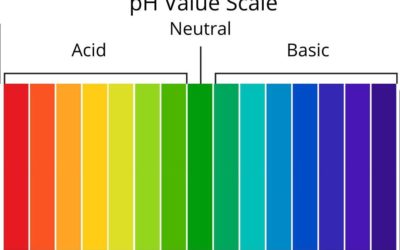We know Mallorca as a rather dry place because it often doesn’t rain enough.
So where does the water in our pipes come from?
Some of it comes from the mountains, the Serra de Tramuntana. This marvellous mountain range acts as a weather divide.
Much of the rainfall coming from the north and north-west is trapped in the mountains of the Serra de Tramuntana and rains down there, while the rest of the island remains much drier.
Water shortages and drought due to a lack of rain and diminishing water reservoirs are fairly normal problems every summer.
Mallorcans have always been used to this, but have been looking for solutions.
Thus, during the Franko government, two reservoirs were created in the mountains, the Cùber and the Gorg Blau, which have been open since 1972.
Today, it is impossible to imagine the mountains without these picturesque lakes.

On the other hand, we get our water from natural underground water reservoirs and rivers in the earth.
Many wells have been created since the 12th century. Water could also be drawn from the depths with the help of the wind; the oldest watermill was built in 1845.
However, most of the surviving examples date from the 19th century and were used as wind pumps to pump groundwater to irrigate the fields.
Today, almost every rural property has its own water, but many share the wells.
Municipalities such as Santanyi also extract water from deep wells and send it into the municipal pipes.
However, if too much fresh water is extracted, the delicate hydrostatic balance at depth is upset: the water flows from the denser to the less dense medium until the pressure ratios are equalised.
And what then flows out of the taps is rarely drinkable, as the water is salty.
Unfortunately, this affects the coastal regions from Santanyi to Porto Colom.
Some rural properties collect rainwater and channel it into a cistern (water tank or water depot).
Rainwater is basically distilled water without any minerals and unfortunately often acidic.
Condensation removes all the minerals from the water or they remain in the original water. On its way back to the earth, however, the water usually only absorbs pollutants and bacteria, so that the water cannot be consumed without filtration.
Unfortunately, drinking rainwater is not recommended. Not only the possible contamination by substances in the air, but also demineralisation plays a major role here. Condensation removes all the minerals from the water.
People who are aware of this often use rainwater for their garden, but this is also not really recommended if the plants do not receive any additional minerals.
Tourism has increased significantly in recent years, which requires enormous amounts of water.
For this reason, seawater desalination plants (osmosis plants) are used to supply various coastal regions and their hotels with water.
However, this is not drinking water. Water from desalination plants is osmotically filtered, does not contain any minerals and does not really have a good flavour.
This water should not be drunk long-term. I will write in more detail about why.
Nevertheless, there is excellent water in most parts of our island, which I consider to be very valuable drinking water.
Why?
From north to south of Mallorca there are slightly different pH values.
Water samples from our customers across Mallorca show these pH values ranging from 7 to over 9, which indicates high to very high mineral content.
If we filter this water in a gentle way, we obtain a living and vital water that benefits our health.
Water that retains its natural structure is water that helps our body to cleanse and remove waste products.
Water with a pH value of more than 7 is alkaline water.
https://aguaris.com/wasserfilter/
To maintain our vitality and health, it is important to drink alkaline, structured water.
Water that supplies our body with its natural minerals.
Yes,… in Mallorca we not only have a lot of sun, but also natural and healthy water, …. what luck!









Hi i think that i saw you visited my web site thus i came to Return the favore I am attempting to find things to improve my web siteI suppose its ok to use some of your ideas
It’s great if you think our ideas are so good and want to copy them. But you’d better ask my web designer. EVA
I have read some excellent stuff here Definitely value bookmarking for revisiting I wonder how much effort you put to make the sort of excellent informative website
Thank you very much !